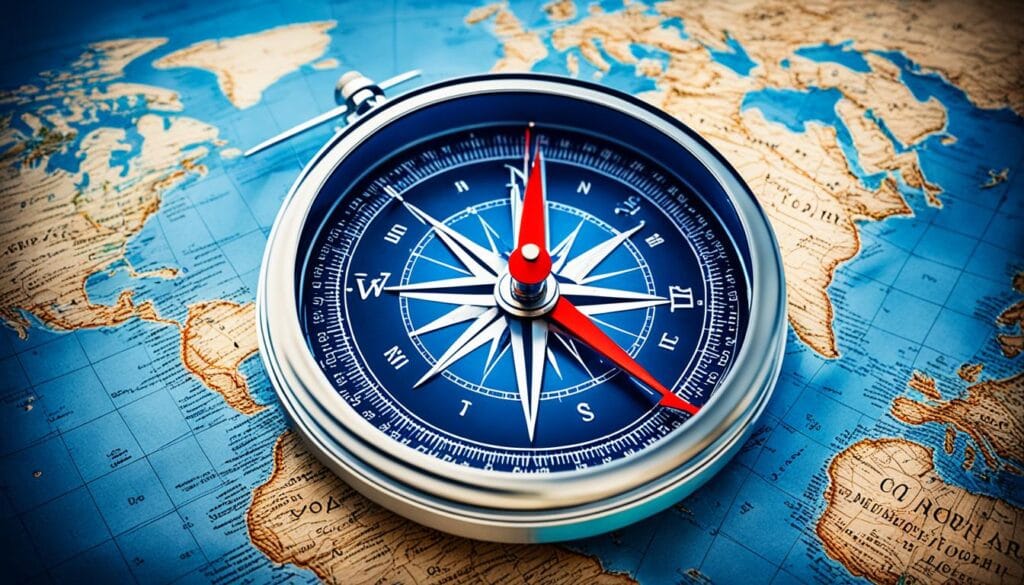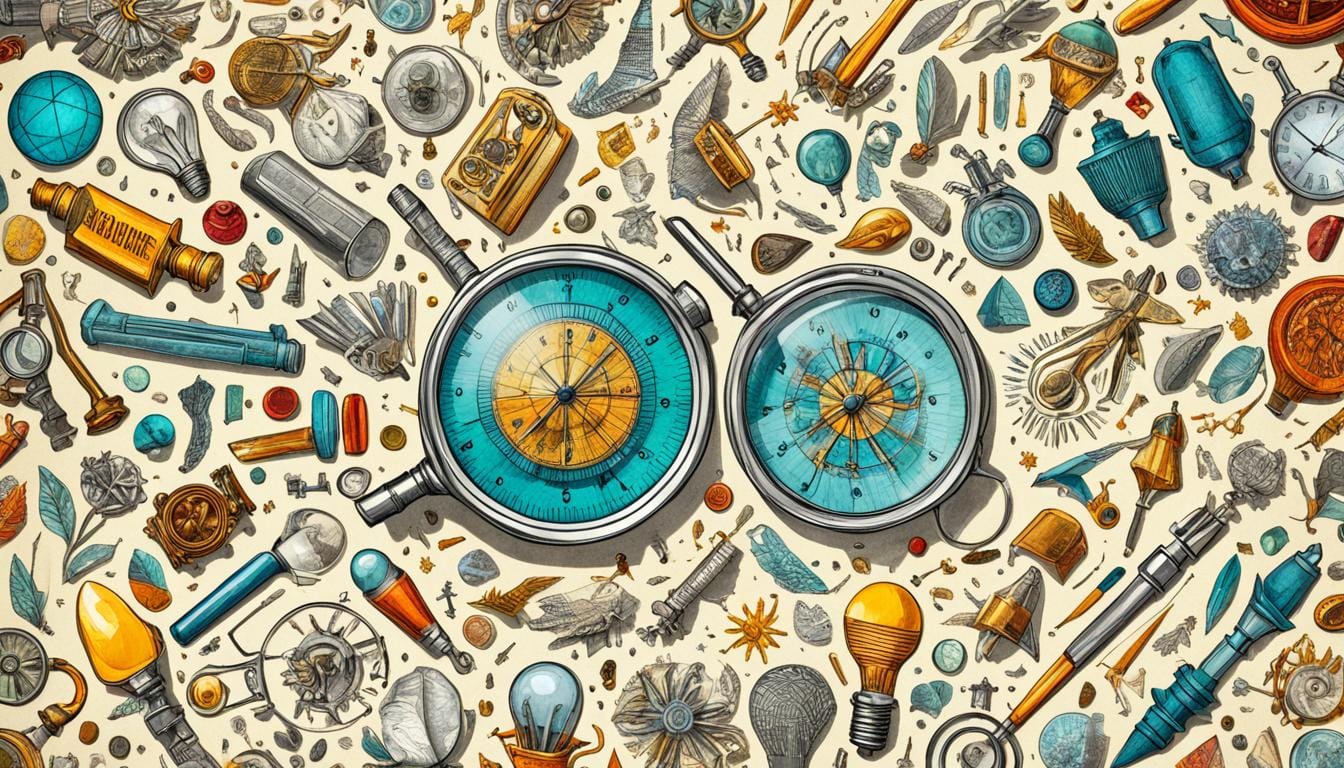Humans are naturally curious and creative. These traits have led us to many scientific and technological breakthroughs. Since our earliest days, we’ve kept innovating. From the first wheel to Mars rovers, some inventions really changed the game.
Some were born from a single eureka moment. But most big inventions came from many people working together over time. This article looks at 5 inventions that changed the world in big ways.
Wheel: Revolutionary Transportation
Origins and Impact of the Wheel
The wheel is a simple yet groundbreaking invention that has changed human history. It first appeared around 3,500 B.C. in Mesopotamia, now Iraq. This innovation quickly spread, changing how people moved goods and traveled.
Before the wheel, moving around and transporting items was hard. The idea of the wheel and axle was a major breakthrough. It led to the creation of carts and vehicles. But making wheels was tough, needing perfect round holes and a well-fitting axle.
Wheeled carts greatly helped with farming and trade by making moving goods easier. They also made long trips less tiring for people. In fact, kids in southern Mexico played with toy dogs on wheels as early as 3,000 years ago.
Today, the wheel is still crucial in our lives, from clocks to cars to turbines. Its ability to adapt shows its lasting impact on technology and society.
| Wheel Invention Timeline | Key Milestones |
|---|---|
| 4000-4500 BCE | Earliest mention of the wheel in the Eurasian Steppe |
| 4500-4000 BCE | Evidence of rotating platforms in Mesopotamia, suggesting the foundation for future wheeled technologies |
| 3500 BCE | The wheel was invented in Mesopotamia, the earliest known wheeled vehicles |
| 2900-2000 BCE | Introduction of the spoke wheel, leading to faster and lighter vehicles |
| 2000 BCE | Innovation of hollowing out the discs to make a lighter wheel |

Printing Press: Democratizing Knowledge
In the 15th century, Johannes Gutenberg, a German inventor, changed how we share knowledge. His printing press used movable metal type, making books fast and cheap to produce. This led to a big change in culture and thought across Europe and beyond.
Before the printing press, making books was hard and took a lot of time. Only the rich could afford them. But with Gutenberg’s press, books became cheaper and reached more people. By 1500, millions of books were printed in Western Europe, making knowledge much more available.
The printing press spread ideas fast and far. It made books and information open to everyone, not just the rich. This change helped spark a cultural movement, letting people question old beliefs. It also helped start the Enlightenment era.
This press was key in keeping and sharing knowledge. It made sure important information and culture didn’t get lost. Books became a big part of society, helping libraries grow. These places became centers for sharing ideas and moving society forward.
Today, the printing press’s impact lives on through the digital revolution. The internet, online journals, and digital libraries have made knowledge easy to get. They let people learn and explore without limits, making learning a lifelong journey.

From Gutenberg’s first press to today’s digital age, the printing press has changed how we share knowledge. It has given power to individuals and shaped our world.
Penicillin: A Lifesaving Discovery
Alexander Fleming’s Accidental Breakthrough
In 1928, Alexander Fleming, a Scottish scientist, made a groundbreaking discovery. He was studying a Petri dish filled with bacteria when he saw something unexpected. A mold had contaminated the sample, killing the bacteria. This mold was Penicillium, a fungus that produced a powerful antibiotic called penicillin.
This chance find changed the course of medicine. For the next 20 years, scientists worked hard to make penicillin safe and effective. They found it could fight many bacterial infections without harming people.
By 1944, penicillin was being made on a large scale and shared with the public. It has since saved millions of lives. But, about 1 in 10 people might react badly to it. Luckily, most can be treated and still benefit from this antibiotic.
| Key Milestones in Penicillin Development | Year |
|---|---|
| Alexander Fleming’s accidental discovery of penicillin | 1928 |
| Howard Florey and Ernst Chain demonstrate penicillin’s potential to treat bacterial diseases | 1940 |
| Penicillin becomes available for public use in the UK | 1946 |
The story of penicillin shows how curiosity, teamwork, and hard work can lead to big changes. It’s a story of how science can make a huge difference in the world.

Compass: Enabling Global Exploration
The compass is a key invention that has greatly helped in human exploration and trade. It started in ancient China during the Han Dynasty, between the 2nd century BCE and 1st century CE. Back then, it was made with lodestone, a naturally magnetized iron ore. But it wasn’t until the Song Dynasty, from the 11th to the 12th centuries, that it was first used for finding your way.
This tool let sailors navigate safely far from land. It opened up the world for exploration and helped in the growth of global trade. As it spread to the West, it changed how we see and understand the Earth.
Over time, the compass has changed a lot. From the early lodestone versions to the more reliable “mariner’s compass” of the 13th century. This version had cardinal directions and wind roses in a sealed box. In the 18th century, the Age of Enlightenment brought more changes, like liquid-filled compasses to fix the stability problem.
The compass has been key in exploration and navigation around the world. It helped famous explorers like Vasco da Gama and Christopher Columbus during the Age of Discovery. It also played a big part in making modern maps more accurate.
| Timeline | Compass Advancements |
|---|---|
| 2nd century BCE – 1st century CE | Compass invented in China using lodestone |
| 11th – 12th centuries | Compass used for navigation during the Song Dynasty in China |
| 13th century | Mariner’s compass with cardinal directions and wind roses developed in Europe |
| 18th century | Liquid-filled compasses introduced to address stability issues |
| 19th – 20th centuries | Luminous dials for night navigation and compensating magnets developed |
The compass is a lasting symbol of navigation and exploration. Its journey from ancient China to its wide use in the Age of Discovery shows the power of human creativity. It’s a simple invention that has greatly changed how we see and interact with our world.

Curious Inventions: Imagination Meets Innovation
Throughout history, some of the most remarkable curious inventions have come from combining creativity and problem-solving. From the simple paper centrifuge to big changes in technology, these innovative ideas have changed the world a lot.
Consider Saad Bhamla, a biomedical engineer who made a low-cost paper centrifuge, or “paperfuge.” It’s for medical places in poor countries. Old centrifuges cost a lot, between $1,000 to $5,000, and many clinics can’t afford them. Bhamla’s cheap solution can spin really fast, up to 125,000 rpm, much better than the first versions.
Bhamla’s work shows how creative problem-solving can solve big global problems. He used what he had and his team’s skills to make a big change in healthcare for poor areas.
Adam Grant says making places where people ask questions can lead to big discoveries and new ideas. By being curious and working together, groups can find new ways to solve problems and make big changes.

Things like renting out air mattresses led to Airbnb, and finding penicillin was an accident. Curious inventions often come from surprising places. By encouraging an innovative spirit and letting people use their creative problem-solving skills, companies can lead in new technologies and discoveries.
As we keep exploring new things, the curious, innovative spirit will keep pushing us forward. It will inspire unconventional creations and new ideas that change our world.
Conclusion: Embracing Curiosity for Progress
The curious inventions we’ve looked at show how powerful human creativity and innovative ideas can be. The wheel changed how we move, and the printing press spread knowledge widely. These groundbreaking discoveries have changed our world a lot. Some were found by accident, but most came from hard work and small steps by many thinkers.
Looking ahead, we see that our curious nature will keep driving change. By using our imaginative engineering, we can open new doors and bring about new disruptive technologies and forward-thinking designs. The path to progress is ongoing, and future curious minds will keep pushing what we can do.
The avant-garde contraptions we’ve seen show what human curiosity can achieve. By supporting exploration, taking risks, and valuing new ideas, we can make the most of our collective curiosity. This way, we can keep making the world better and more connected.


